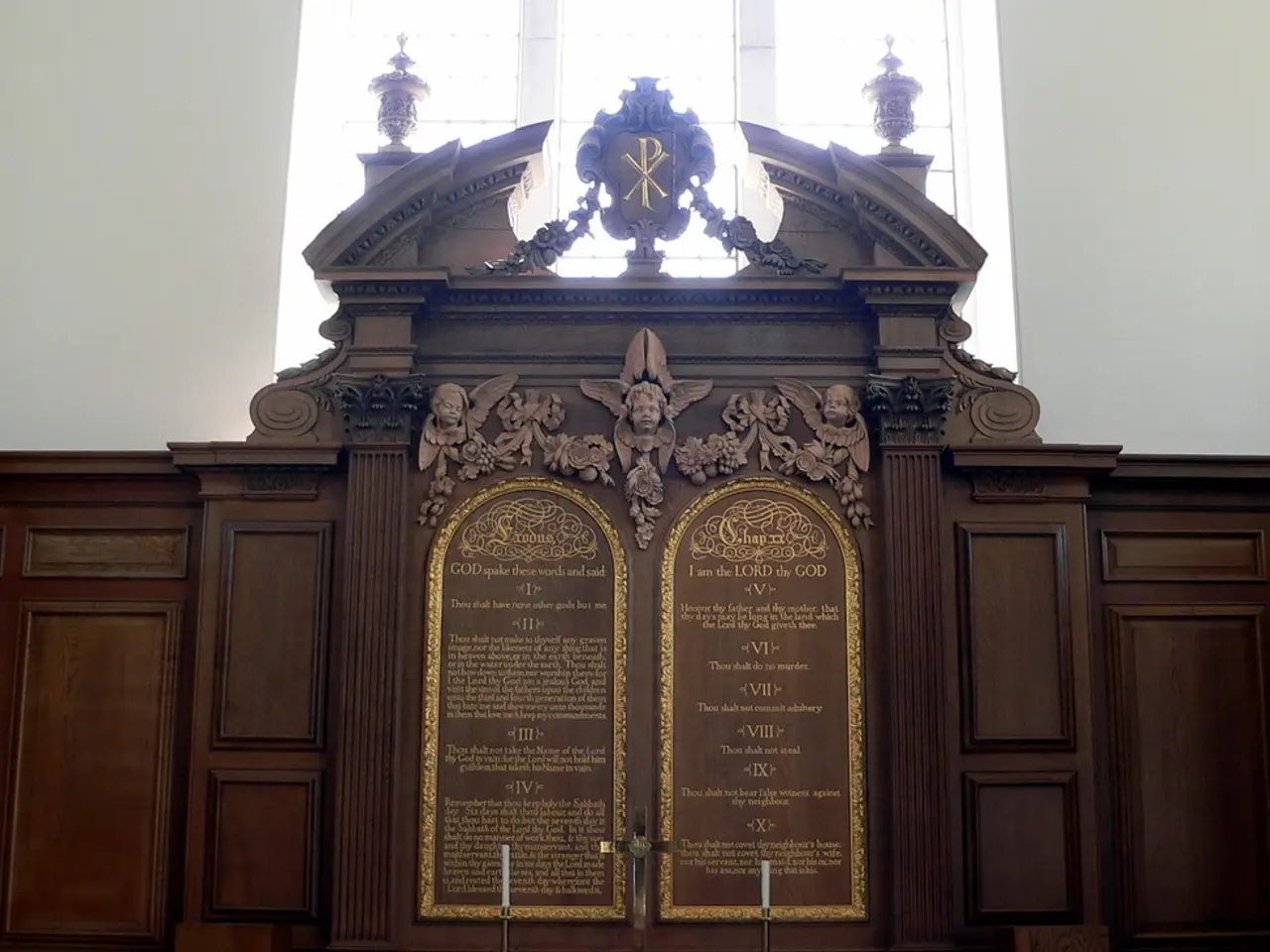Revolutionary Artifacts Showcased in Philadelphia's Museum, Highlighting American History
In the heart of Philadelphia, a city steeped in American history, visitors can step back in time and witness an iconic artifact from the Revolutionary War - George Washington's Revolutionary War Tent. Housed at the Museum of the American Revolution, this tent offers a tangible link to the struggle for independence and a vivid representation of Washington's leadership during those tumultuous years.
The tent, believed to have been made in Reading, Pennsylvania, in early 1778, served as Washington's portable command post throughout the war. It was during this time that the tent functioned as his mobile field headquarters, allowing him to conduct war strategies while moving with the army in the field.
The tent, which has been preserved in remarkable condition for being about 250 years old, is one of the few surviving artifacts directly connected to Washington’s personal command during the Revolution. It symbolizes his active military leadership and the logistical challenges faced by the Continental Army.
At the Museum of the American Revolution, the tent is part of a larger narrative that brings the story of the war and the founding of the United States to life through authentic artifacts. Visitors can immerse themselves in the conditions and realities of 18th-century military command and gain an insight into the personal life of one of America’s founding figures.
Through presentations and interactive displays, including storytelling by interpreters, the tent highlights the human and strategic elements of the Revolutionary War. An upcoming museum exhibition entitled "Witness to Revolution: The Unlikely Travels of Washington’s Tent" will delve deeper into the tent's ownership and survival history.
Old City Philadelphia serves as an open-air museum, where visitors can trace the footsteps of Washington and other founding fathers. Nearby attractions include Independence Hall, where both the Declaration of Independence and the U.S. Constitution were signed, and Carpenters' Hall, where talk of revolution simmered during the first Continental Congress held there in 1774.
The tent's ownership passed down from Washington to the family of Confederate General Robert E. Lee before it was moved to the Museum of the American Revolution, which opened in 2017. The museum traces the events leading up to the 13 Colonies revolting against England and the timeline of the war, providing a comprehensive understanding of the quest for independence.
Visitors can also explore other historical sites in Philadelphia, such as the Constitution Center, featuring bronze statues of the document's 39 signers and 3 dissenters, and the Georgian-style Christ Church, where five signers of the Declaration of Independence are buried.
In addition to the tent, the museum features dioramas showcasing tense moments during the war years, such as General Washington breaking up a street brawl in Harvard Yard and Oneida Nation Native Americans debating whether to side with the Americans or British. The museum also highlights significant events like American soldiers dragging captured cannons from Fort Ticonderoga through snow and mud for 300 miles to later use them against British troops occupying Boston.
A replica statue of England's King George III in New York City was toppled by colonial protestors, and most of the statue was melted down and turned into 42,000 musket balls to fire back at the British. The museum pays homage to this act of defiance and the spirit of revolution that ignited the war for independence.
Elfreth's Alley, the nation's oldest residential street, is still inhabited by modern-day Philadelphians in more than 200-300 year-old brick rowhouses. The tent's display, nestled within its own theater with hourly presentations, offers a captivating glimpse into the past amidst the vibrant city life.
In summary, George Washington’s Revolutionary War Tent is both a historic symbol of military command during the Revolution and an essential exhibit that educates the public on the complexities and realities of the quest for independence. A visit to the Museum of the American Revolution in Philadelphia offers a unique opportunity to connect with history and gain a deeper understanding of the events that shaped the birth of a nation.
The George Washington's Revolutionary War Tent, preserved remarkably well after 250 years, is part of a larger narrative at the Museum of the American Revolution that immerses visitors in the conditions and realities of 18th-century military command. Due to its unique ownership history and extensive use as Washington's mobile field headquarters, an upcoming museum exhibition entitled "Witness to Revolution: The Unlikely Travels of Washington’s Tent" aims to delve deeper into the tent's story and travel experiences.




